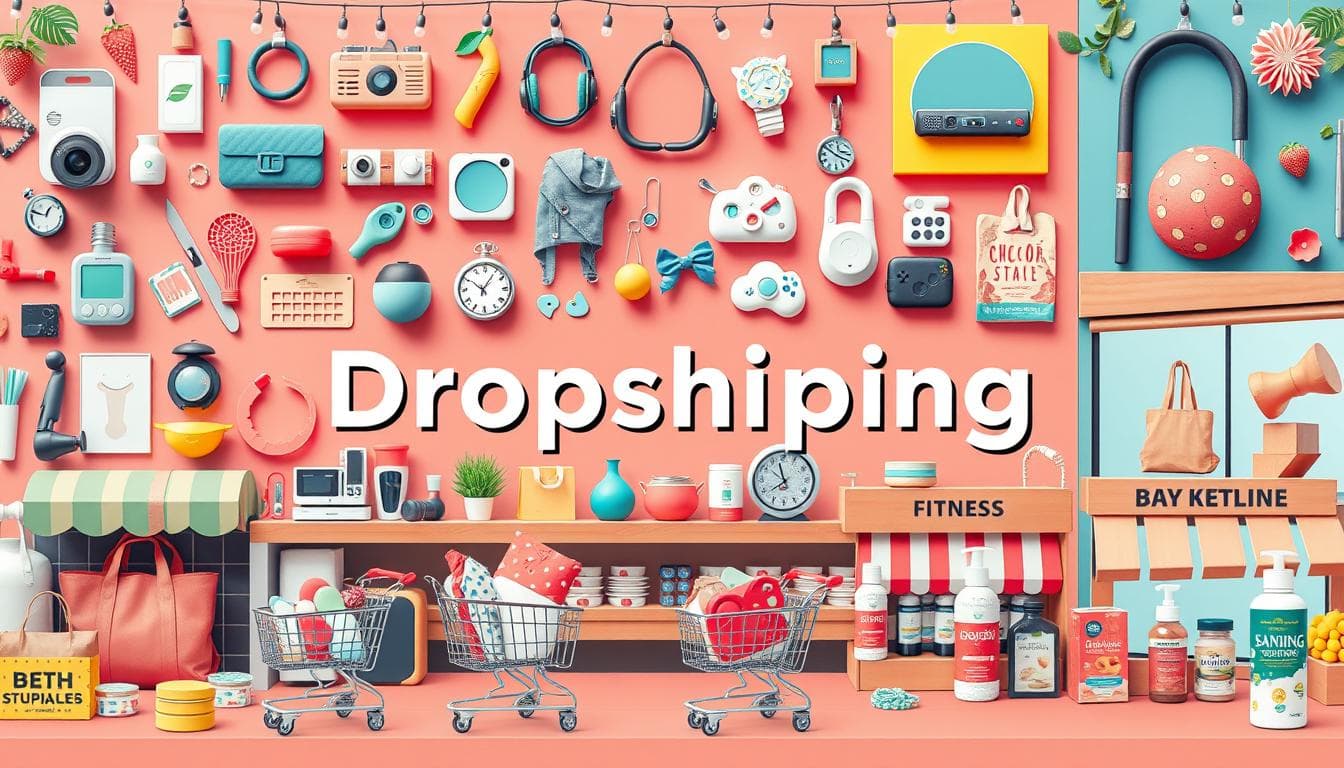Dropshipping sounds like a dream, right? You set up an online store, list some products, and watch the money roll in. But the reality is a bit different. Many people jump into dropshipping with stars in their eyes, only to find themselves struggling to stay afloat. The truth is, there are a bunch of pitfalls that can trip you up if you’re not careful. In this article, we’re going to dive into why dropshipping often doesn’t work out and the common mistakes you should steer clear of in 2025. Let’s get into it and see how you can avoid the traps that many fall into.
Key Takeaways
Dropshipping isn’t a quick way to get rich; it requires hard work and dedication.
Understanding your market and customer needs is crucial for success.
Selecting the right products can make or break your dropshipping business.
Financial management, including cash flow and profit margins, is essential.
Building a strong online presence and customer trust is key to long-term success.
Table of Contents

Understanding Why Dropshipping Fails
The Illusion of Easy Money
Many jump into dropshipping thinking it’s a get-rich-quick scheme. The appeal of minimal startup costs and not handling inventory sounds like a dream. But the reality? It’s not that simple. Success in dropshipping demands hard work and strategic planning. Without this, you’re just setting yourself up for disappointment.
Ignoring Customer Needs
Focusing solely on sales without understanding what customers actually want is a recipe for disaster. Dropshippers often think about their own pockets first, neglecting the importance of customer satisfaction. To thrive, you must prioritize your customers’ needs and preferences.
Lack of Market Research
Skipping market research is like driving blindfolded. Many assume they know what will sell without checking market trends or competition. This oversight can lead to stocking products that nobody wants or pricing them incorrectly. To avoid this pitfall, thorough research is crucial before launching your store.
“The biggest mistake in dropshipping? Assuming you know what the market wants without any real data.”
By understanding and addressing these common pitfalls, you can increase your chances of success in the dropshipping world.
Common Mistakes That Lead to Dropshipping Failure
Unrealistic Expectations
Many people jump into dropshipping with dreams of quick riches. They see flashy ads and hear stories of overnight success, believing they’ll rake in profits with minimal effort. The truth is, dropshipping is not a get-rich-quick scheme. It requires time, patience, and a lot of hard work. Those who expect instant success are often disappointed and quit too soon.
Poor Supplier Choices
Choosing the right suppliers is crucial. Relying on a single supplier can be risky. If they run out of stock or fail to deliver on time, your business suffers. It’s wise to have backup suppliers to ensure you can always meet customer demands. Additionally, vet your suppliers thoroughly to avoid quality issues.
Neglecting Customer Service
In dropshipping, you don’t handle the products directly, but customer service is still your responsibility. Neglecting this can hurt your brand. Customers expect timely responses and solutions to their problems. Prioritize customer service by setting up efficient communication channels and addressing issues promptly. This builds trust and encourages repeat business.
Dropshipping isn’t just about selling products; it’s about creating a reliable brand that customers can trust. By avoiding these common mistakes, you set a solid foundation for your business to thrive.
The Role of Product Selection in Dropshipping Success
Choosing the Wrong Products
Picking the right products is like finding the right puzzle piece that fits perfectly into your business model. Choosing the wrong products can quickly lead to failure. It’s not just about what looks good or trendy; it’s about understanding what your customers actually want. Think about it: if you’re selling snow gear in a tropical climate, you’re probably not going to see much success. So, knowing your audience is key.
Overlooking Quality for Profit
In the rush to make a quick buck, some dropshippers end up sacrificing quality. It’s easy to fall into the trap of opting for cheaper products to boost profit margins. But this can backfire. Customers notice when quality is lacking, and they’re not shy about leaving negative reviews. Instead of focusing purely on profit, consider the long-term benefits of offering quality products that customers will love and recommend to others.
Ignoring Market Demand
Market demand is like the wind in your sails. Without it, you’re not going anywhere. It’s crucial to do your homework and understand what’s hot and what’s not. Ignoring market demand can mean you’re left with products that no one wants. Use tools and trends to guide your product selection. By aligning your offerings with what people are actively searching for, you increase your chances of success.

Product selection isn’t just about what’s available; it’s about what’s desirable. A deep understanding of market trends and consumer needs can set you apart in the crowded dropshipping landscape.
In summary, the path to dropshipping success is paved with smart product choices. Focus on quality, understand your market, and always keep an eye on what customers are clamoring for. This approach not only helps in building a loyal customer base but also ensures sustainable growth.
Financial Pitfalls in Dropshipping
Mismanaging Cash Flow
Cash flow is the lifeblood of any business, and dropshipping is no exception. Many new dropshippers get caught up in the excitement of sales and forget about the importance of maintaining a healthy cash flow. Without proper cash management, even a thriving business can quickly find itself in trouble. Here are some tips to avoid cash flow problems:
Keep track of all your expenses. This includes not just the cost of goods sold but also marketing expenses, platform fees, and any other overheads.
Plan for slow periods. Sales can fluctuate, so having a financial cushion can help you weather the lean times.
Use tools or software to monitor your cash flow regularly.
Underestimating Costs
It’s easy to overlook the full range of costs involved in dropshipping. Beyond the obvious costs of purchasing products from suppliers, there are hidden costs that can add up:
Shipping fees, which can vary greatly depending on the product size and destination.
Payment processing fees, which take a cut from every transaction.
Returns and refunds, which can eat into your profits if not managed carefully.
Being aware of these costs upfront can help you set realistic prices and avoid nasty surprises down the road.
Ignoring Profit Margins
Profit margins are crucial in determining the success of your dropshipping business. Many dropshippers are tempted by the allure of high sales volume but forget to consider if those sales are actually profitable.
Calculate your net profit margin by considering all expenses, including product costs, shipping, and marketing.
Avoid the trap of competing solely on price, as this can lead to razor-thin margins.
Focus on dropshipping as a popular business model that allows for strategic pricing and value-added services to maintain healthy margins.
In the world of dropshipping, understanding your financials is like having a map in uncharted territory. Without it, you risk getting lost in the complexities of costs and profits. Stay informed, plan ahead, and keep your financial health in check to ensure long-term success.
The Importance of a Strong Online Presence

Website Optimization
Your website is like your storefront. If it looks shabby or takes forever to load, folks are just gonna walk away. A website that’s slow or confusing can really hurt your business. A speedy and well-designed site makes a world of difference. Here’s a quick checklist:
Pick a reliable hosting provider.
Use a Content Delivery Network (CDN) to speed things up.
Optimize images and other media.
Make sure your site is mobile-friendly.
Effective Use of Sales Channels
Choosing the right sales channels is a big deal. Whether it’s social commerce on Instagram or a marketplace like Amazon, each has its quirks. Here’s what to consider:
Match your target audience with the right platform.
Understand the fee structures.
Watch out for competition and platform rules.
Building Customer Trust
Trust is everything online. If customers don’t trust you, they won’t buy from you. Here’s how to build it:
Be transparent with product info and shipping details.
Offer secure payment options.
Provide excellent customer service.
In 2025, dropshipping continues to appeal to entrepreneurs aiming to enter the ecommerce market without the need for inventory or warehousing investments. Building a strong online presence isn’t just about having a website—it’s about creating a seamless and trustworthy experience for your customers.
Strategies to Avoid Dropshipping Pitfalls

Learning from Competitors
One of the smartest moves in dropshipping is to keep an eye on your competition. Learning from mistakes others make can save you a lot of trouble. Competitors can teach you what works and what doesn’t by observing their successes and failures.
Create a list of your top three competitors and analyze their strategies. Look at their product offerings, pricing, and customer service. This isn’t about copying them, but finding gaps in the market and offering something unique.
Adapting to Market Changes
The market is always changing, and being stuck in old ways is a surefire way to fail. Stay updated with the latest trends and shifts in consumer behavior. Use tools like Google Trends or social media analytics to track what’s hot.
Regularly update your product listings to reflect current demands. This proactive approach ensures you’re not left behind when the market shifts.
Focusing on Customer Experience
Customer experience is everything in dropshipping. From the moment they land on your site to post-purchase support, every interaction counts. Make sure your website is user-friendly and loads quickly.
Offer multiple channels for customer support, like chat, email, and phone. Personalize the shopping experience by recommending products based on previous purchases or browsing history. Remember, a happy customer is more likely to return and recommend your store to others.
Embracing these strategies can help you steer clear of common pitfalls and build a successful dropshipping business. It’s not just about selling products; it’s about creating a brand that customers trust and love
Conclusion
So, there you have it. Dropshipping isn’t the golden ticket to instant riches that some might think. It’s a business like any other, with its own set of challenges and hurdles. Sure, you can make money, but it takes effort, research, and a bit of trial and error. The key is to learn from the mistakes of others and not be afraid to make a few of your own. Keep your expectations realistic, stay flexible, and remember that persistence is your best friend. If you’re willing to put in the work, dropshipping can still be a rewarding venture in 2025. Just keep your eyes open and your mind ready to adapt.
Frequently Asked Questions
What is dropshipping?
Dropshipping is a way to sell products online without keeping them in stock. When someone buys a product from your online store, you order it from a supplier who sends it directly to the customer.
Why do many dropshipping businesses fail?
Many dropshipping businesses fail because they don’t do enough research, choose the wrong products, or have unrealistic expectations about making money quickly.
How can I choose the right products for dropshipping?
To choose the right products, research what people want to buy, check out the competition, and make sure the products are good quality and not too expensive.
What are some common mistakes in dropshipping?
Common mistakes include not understanding customer needs, picking bad suppliers, ignoring market trends, and not managing money well.
How important is customer service in dropshipping?
Customer service is very important because it helps build trust and keeps customers happy. Happy customers are more likely to buy again and tell others about your store.
Can I make a lot of money with dropshipping?
You can make money with dropshipping, but it takes time, effort, and planning. It’s not a get-rich-quick scheme, and success depends on choosing the right products and marketing them well.








